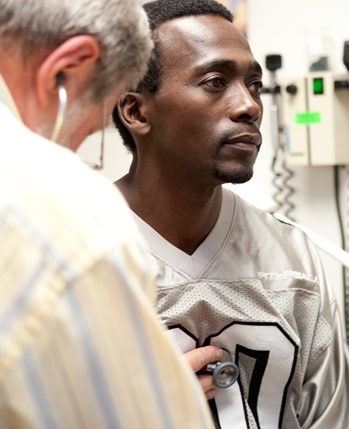2008
Retaining People in Care Through Re-Entry Programs
The rate of incarceration among people living with HIV disease has long been alarming: 1 in 4 people with HIV have been in a correctional setting at some point in their lives.1 HRSA’s committed to addressing this problem has been longstanding. In 2008, HRSA’s AIDS Education and Training Center released a series of educational videos on HIV/AIDS care in correctional settings and HRSA’s Special Projects of National Significance continued their work on the Enhancing Linkages to HIV Primary Care and Services in Jail Settings Initiative.
Many of the same psychosocial and socioeconomic risk factors associated with incarceration, including homelessness, mental illness, lack of insurance coverage, low education level, poverty, and substance abuse, are associated with HIV infection.2,3,4,5,6 It comes as no surprise, then, that inmates suffer disproportionately from a wide range of infectious diseases7 as well as chronic diseases. Without improved health and re-entry programs, these conditions will only worsen.
Research shows that increased testing and treatment of communicable diseases, such as HIV and tuberculosis, in the jail setting might assist with disease control in the greater community. Many inmates have limited access to health care before incarceration and are thus less likely to have received screening and treatment for diseases of concern to public health officials.8,9 Incarceration can therefore play an unlikely role as a health care intervention.10
 Health Resources & Services Administration
Health Resources & Services Administration



